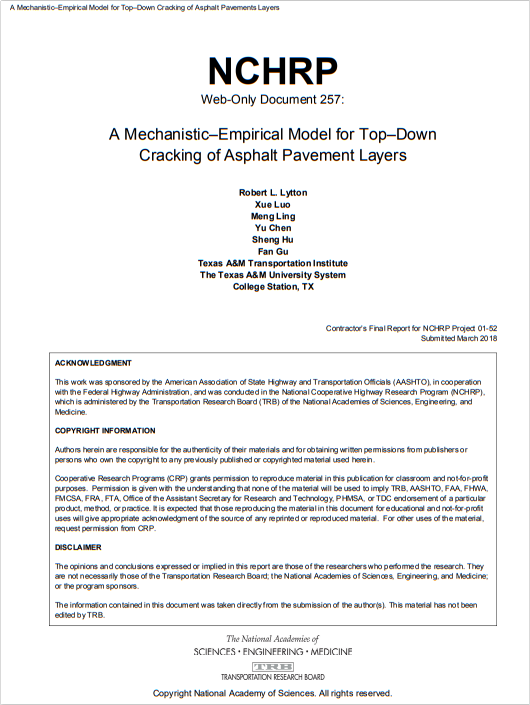Kami menggunakan cookies untuk membuat pengalaman Anda lebih baik. Untuk mematuhi petunjuk e-Pribadi yang baru, kami perlu meminta persetujuan Anda untuk menyetel cookies. Pelajari lebih lanjut .
A Mechanistic-Empirical Model for Top-Down Cracking of Asphalt Pavement Layers
Recent studies have determined that some load related fatigue cracks in asphalt pavement layers can be initiated at the pavement surface and propagate downward through the asphalt layer. However, this form of distress cannot entirely be explained by fatigue mechanisms used to explain cracking that initiates at the bottom of the pavement. These studies have also suggested hypotheses regarding top-down cracking mechanisms (e.g., bending-induced surface tension and shear-induced near-surface tension) and developed preliminary models for predicting crack initiation and propagation. For example, the AASHTO Mechanistic-Empirical Pavement Design Guide Manual of Practice (MEPDG) developed under NCHRP Project 01-37A provides a
tentative methodology for the analysis and performance prediction of such cracking. Also, recent work completed under NCHRP Project 01-42A developed a viscoelastic continuum damage-based crack initiation model and an asphalt layer fracture mechanics-based crack propagation model. However, additional research is needed to address the issues associated with top-down cracking and to develop a calibrated, validated mechanistic-empirical model for incorporation into the MEPDG procedures. Such a model will allow a more rational analysis and design of asphalt pavements and overlays.

